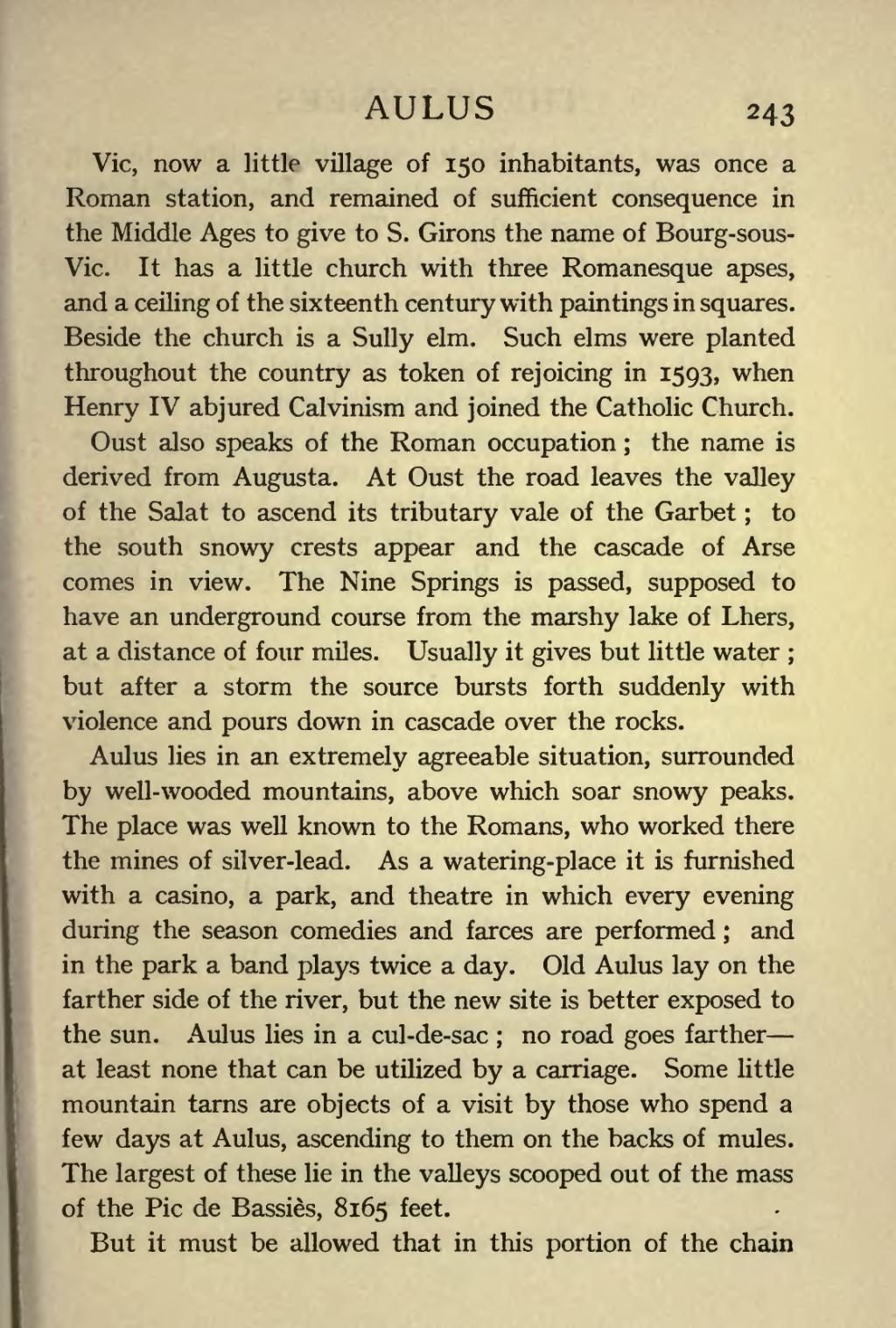Vic, now a little village of 150 inhabitants, was once a Roman station, and remained of sufficient consequence in the Middle Ages to give to S. Girons the name of Bourg-sous-Vic. It has a little church with three Romanesque apses, and a ceiling of the sixteenth century with paintings in squares. Beside the church is a Sully elm. Such elms were planted throughout the country as token of rejoicing in 1593, when Henry IV abjured Calvinism and joined the Catholic Church.
Oust also speaks of the Roman occupation; the name is derived from Augusta. At Oust the road leaves the valley of the Salat to ascend its tributary vale of the Garbet; to the south snowy crests appear and the cascade of Arse comes in view. The Nine Springs is passed, supposed to have an underground course from the marshy lake of Lhers, at a distance of four miles. Usually it gives but little water; but after a storm the source bursts forth suddenly with violence and pours down in cascade over the rocks.
Aulus lies in an extremely agreeable situation, surrounded by well-wooded mountains, above which soar snowy peaks. The place was well known to the Romans, who worked there the mines of silver-lead. As a watering-place it is furnished with a casino, a park, and theatre in which every evening during the season comedies and farces are performed; and in the park a band plays twice a day. Old Aulus lay on the farther side of the river, but the new site is better exposed to the sun. Aulus lies in a cul-de-sac; no road goes farther—at least none that can be utilized by a carriage. Some little mountain tarns are objects of a visit by those who spend a few days at Aulus, ascending to them on the backs of mules. The largest of these lie in the valleys scooped out of the mass of the Pic de Bassiès, 8165 feet.
But it must be allowed that in this portion of the chain
